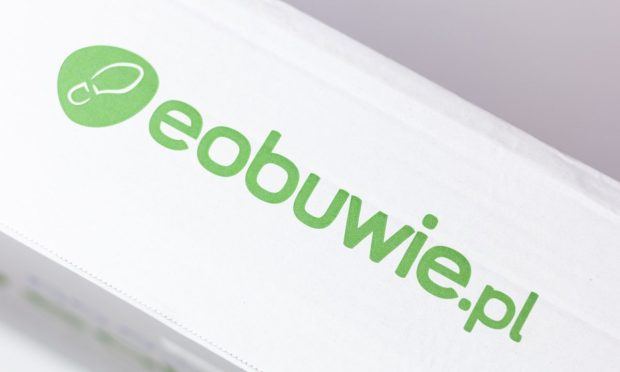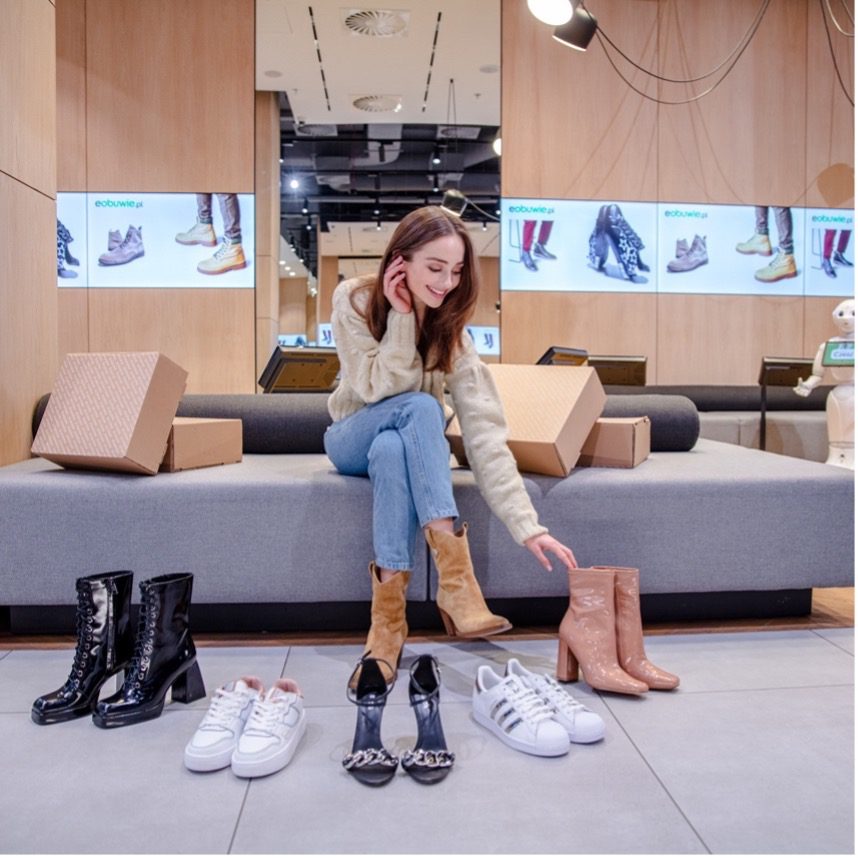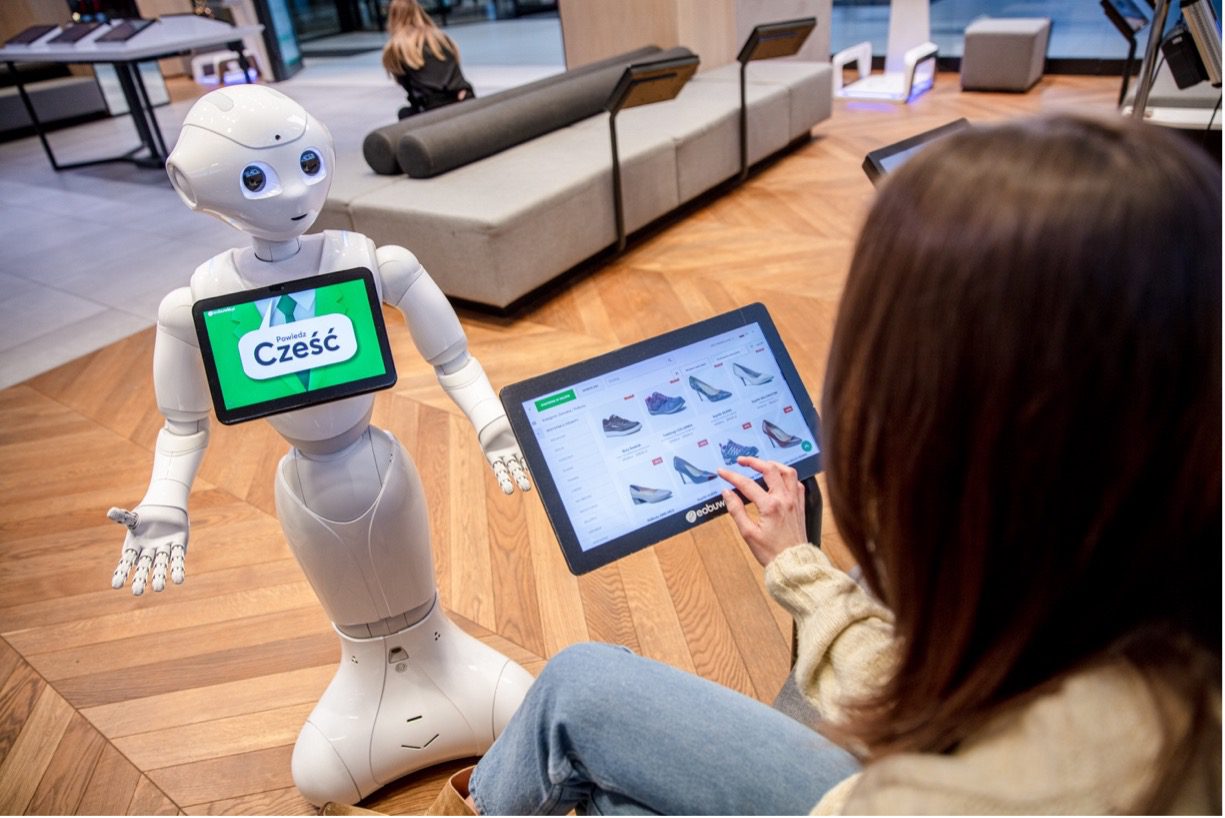Poland’s High-Tech ‘Eobuwie’ Brand Takes the Shoes out of Traditional Shoe Stores

There may only be about 30 “eobuwie” (pronounced “ee-oh-Booie”) omnichannel shoe stores scattered across Poland, but the upstart brand’s new high-tech format is turning heads far beyond its borders.
While traditional physical footwear stores are filled with hundreds of different shoes on display, eobuwie’s storefronts have only tablets and sofas to enable a comfortable, home-like shopping experience that surfaces the company’s entire product line rather than just a tiny slice of it.
“We want the purchasing process to be transparent, simple and quick, so in our stores, instead of shelves and hangers, we offer our customers tablets,” Aleksandra Tomalska, retail director at MODIVO S.A., the brand’s apparel sister company, told PYMNTS. “What distinguishes us from other stores with clothing, accessories and footwear is, above all, our extensive use of technology.”

Simply put, the eobuwie store is essentially a relatively small digital browsing lounge attached to a much larger, fully stocked warehouse that allows customers to either try-on what is actually in-stock or to flag a number of items in advance from the eCommerce site via the company’s “Reserve & Collect” service.
Tomalska said reserve products are typically shipped to a customer’s store of choice within 24 hours and are available for try-on when they arrive, thereby eliminating the frustration of not having the style, size or color shoes a consumer wants.
“This is a unique service in the omnichannel model in the fashion industry,” Tomalska said. “Instead of displaying products, we encourage the customer to sit on a comfortable sofa and choose items of interest on a tablet.”
3 Minutes to Try-On
For walk-in customers who shop onsite via tablet, she said a sales assistant will bring customers the shoes they want to try on “in a maximum of 3 minutes.”
“Placing orders is extremely simple,” she said, noting the ability to customize personal needs and choices, many of which are auto filled or suggested via artificial intelligence (AI) to repeat customers.
For larger orders, or those that involve apparel, special interactive fitting rooms are available that allow customers to try-on their selections in private and to seek help from staff if need be.
“The concept of our physical stores often arouses amazement, but this quickly turns into curiosity and then satisfaction at how friendly and intuitive the model is,” she said, noting that customers appreciate having access to a much wider selection of products.
 As for the company itself, Tomalska said one big advantage of the shoeless shoe store concept, and not having a vast display area that needs constant attention and tidying, is that the retailer gains a lot of space that it can re-use for try-ons, which leads to higher conversion.
As for the company itself, Tomalska said one big advantage of the shoeless shoe store concept, and not having a vast display area that needs constant attention and tidying, is that the retailer gains a lot of space that it can re-use for try-ons, which leads to higher conversion.
“In each store, the stockroom area is several times the size of the sales room,” she said.
True Omnichannel Convenience
Not surprisingly, eobuwie sees enormous potential to scale its omnichannel formula to more physical locations and markets across Europe, especially in the area of product recommendation and improving the customer experience.
“High-tech solutions are the factor that attracts customers,” Tomalska said, noting that many shoppers who already use its eCommerce platforms on a regular basis are excited to “try out ‘shopping of the future’ in the offline world.”
“Physical stores are a key link in our omnichannel strategy,” she said, adding that their unique concept has taught them that “it is worth acting boldly and going beyond the usual schemes.”
